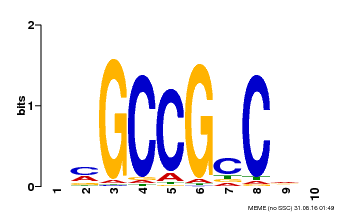 |
PlantRegMap/PlantTFDB v5.0
Plant Transcription
Factor Database
|
| Home TFext BLAST Prediction Download Help About Links PlantRegMap |
Transcription Factor Information
| Basic Information? help Back to Top | |||||||||
|---|---|---|---|---|---|---|---|---|---|
| TF ID | Csa18g010390.1 | ||||||||
| Organism | |||||||||
| Taxonomic ID | |||||||||
| Taxonomic Lineage |
cellular organisms; Eukaryota; Viridiplantae; Streptophyta; Streptophytina; Embryophyta; Tracheophyta; Euphyllophyta; Spermatophyta; Magnoliophyta; Mesangiospermae; eudicotyledons; Gunneridae; Pentapetalae; rosids; malvids; Brassicales; Brassicaceae; Camelineae; Camelina
|
||||||||
| Family | ERF | ||||||||
| Protein Properties | Length: 136aa MW: 14748.1 Da PI: 9.4121 | ||||||||
| Description | ERF family protein | ||||||||
| Gene Model |
|
||||||||
| Signature Domain? help Back to Top | |||||||
|---|---|---|---|---|---|---|---|
| No. | Domain | Score | E-value | Start | End | HMM Start | HMM End |
| 1 | AP2 | 66.2 | 6.2e-21 | 15 | 65 | 2 | 55 |
AP2 2 gykGVrwdkkrgrWvAeIrdpsengkrkrfslgkfgtaeeAakaaiaarkkleg 55
+++GVr+++ +g+++AeIrd ++ g r++lg+f+taeeAa+a+++a+ +++g
Csa18g010390.1 15 KFRGVRRRP-WGKYAAEIRDSRKHG--ERIWLGTFDTAEEAARAYDQAAYSMRG 65
79*******.**********65443..*************************98 PP
| |||||||
| Protein Features ? help Back to Top | ||||||
|---|---|---|---|---|---|---|
| Database | Entry ID | E-value | Start | End | InterPro ID | Description |
| Gene3D | G3DSA:3.30.730.10 | 6.0E-32 | 15 | 75 | IPR001471 | AP2/ERF domain |
| SMART | SM00380 | 2.4E-35 | 15 | 79 | IPR001471 | AP2/ERF domain |
| SuperFamily | SSF54171 | 1.37E-23 | 15 | 75 | IPR016177 | DNA-binding domain |
| CDD | cd00018 | 1.38E-25 | 15 | 74 | No hit | No description |
| Pfam | PF00847 | 3.4E-15 | 15 | 65 | IPR001471 | AP2/ERF domain |
| PROSITE profile | PS51032 | 23.538 | 15 | 73 | IPR001471 | AP2/ERF domain |
| PRINTS | PR00367 | 1.7E-11 | 16 | 27 | IPR001471 | AP2/ERF domain |
| PRINTS | PR00367 | 1.7E-11 | 39 | 55 | IPR001471 | AP2/ERF domain |
| Gene Ontology ? help Back to Top | ||||||
|---|---|---|---|---|---|---|
| GO Term | GO Category | GO Description | ||||
| GO:0009789 | Biological Process | positive regulation of abscisic acid-activated signaling pathway | ||||
| GO:0010186 | Biological Process | positive regulation of cellular defense response | ||||
| GO:0045893 | Biological Process | positive regulation of transcription, DNA-templated | ||||
| GO:0090332 | Biological Process | stomatal closure | ||||
| GO:0005634 | Cellular Component | nucleus | ||||
| GO:0003700 | Molecular Function | transcription factor activity, sequence-specific DNA binding | ||||
| GO:0043565 | Molecular Function | sequence-specific DNA binding | ||||
| Sequence ? help Back to Top |
|---|
| Protein Sequence Length: 136 aa Download sequence Send to blast |
MDQGGRGRRG AEHGKFRGVR RRPWGKYAAE IRDSRKHGER IWLGTFDTAE EAARAYDQAA 60 YSMRGQAAIL NFPHEYNMGS GGSSSSAMAG SSSSSASGAS SSSSSRQVFE FEYLDDSVLE 120 ELLEQGENTN KAKKK* |
| 3D Structure ? help Back to Top | ||||||
|---|---|---|---|---|---|---|
| PDB ID | Evalue | Query Start | Query End | Hit Start | Hit End | Description |
| 5wx9_A | 7e-61 | 1 | 135 | 1 | 131 | Ethylene-responsive transcription factor ERF096 |
| Search in ModeBase | ||||||
| Functional Description ? help Back to Top | ||||||
|---|---|---|---|---|---|---|
| Source | Description | |||||
| UniProt | Probably acts as a transcriptional activator. Binds to the GCC-box pathogenesis-related promoter element. May be involved in the regulation of gene expression by stress factors and by components of stress signal transduction pathways (By similarity). {ECO:0000250}. | |||||
| Binding Motif ? help Back to Top | |||
|---|---|---|---|
| Motif ID | Method | Source | Motif file |
| MP00029 | PBM | Transfer from AT5G43410 | Download |

| |||
| Cis-element ? help Back to Top | |
|---|---|
| Source | Link |
| PlantRegMap | Csa18g010390.1 |
| Regulation -- PlantRegMap ? help Back to Top | ||||||
|---|---|---|---|---|---|---|
| Source | Upstream Regulator | Target Gene | ||||
| PlantRegMap | Retrieve | Retrieve | ||||
| Annotation -- Protein ? help Back to Top | |||||||
|---|---|---|---|---|---|---|---|
| Source | Hit ID | E-value | Description | ||||
| Refseq | XP_010481863.1 | 5e-94 | PREDICTED: ethylene-responsive transcription factor ERF096-like | ||||
| Swissprot | Q9LSX0 | 1e-60 | ERF96_ARATH; Ethylene-responsive transcription factor ERF096 | ||||
| TrEMBL | R0GUN6 | 2e-62 | R0GUN6_9BRAS; Uncharacterized protein | ||||
| STRING | XP_010481863.1 | 2e-93 | (Camelina sativa) | ||||
| Orthologous Group ? help Back to Top | |||
|---|---|---|---|
| Lineage | Orthologous Group ID | Taxa Number | Gene Number |
| Malvids | OGEM10 | 28 | 1650 |
| Best hit in Arabidopsis thaliana ? help Back to Top | ||||||
|---|---|---|---|---|---|---|
| Hit ID | E-value | Description | ||||
| AT5G43410.1 | 6e-45 | ERF family protein | ||||
| Publications ? help Back to Top | |||
|---|---|---|---|
|
|||



